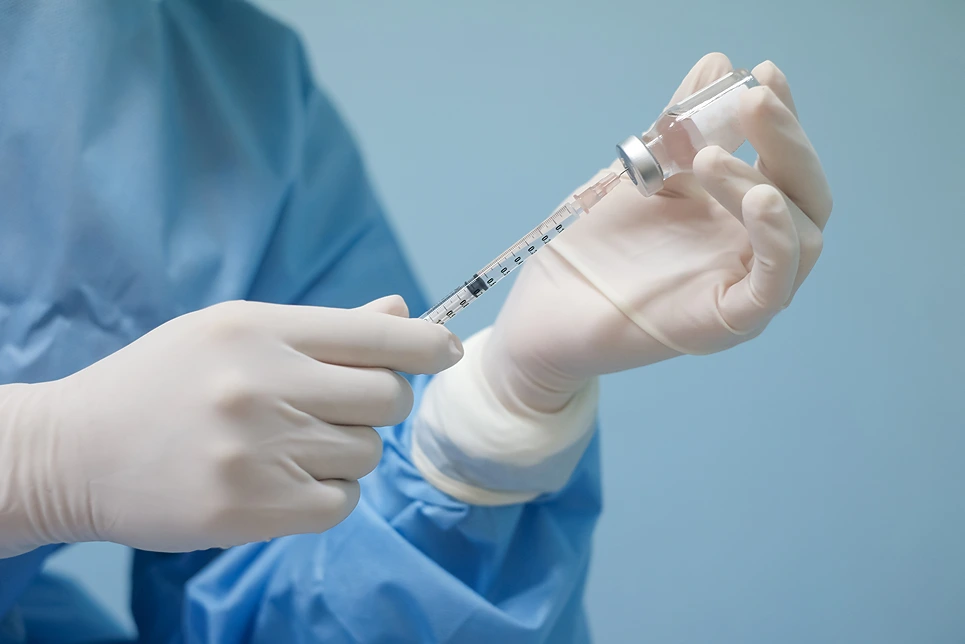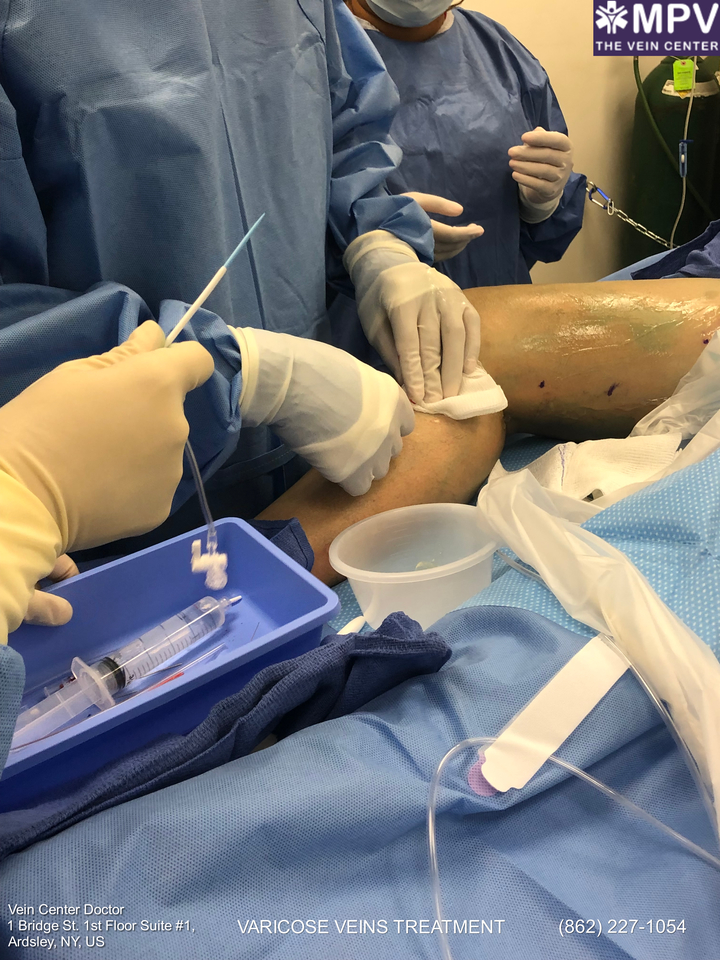One of the common symptoms of varicose veins is leg pain and this sensation can occasionally radiate to the joints and knees. If the veins and pain in your lower leg remain untreated, it can cause persistent swelling and a constant throbbing ache that can limit your mobility and affect your quality of life. In these cases, getting cortisone shots can help improve inflammation in your lower limbs.
But what happens if the cortisone injection accidentally hits your varicose veins? It may cause unwanted vascular complications such as bleeding from broken blood vessels and blood clots. Certain types of corticosteroid injections are also associated with a potential risk of deep vein thrombosis. When these complications occur, you should immediately see your healthcare provider to get proper treatment.
Living with unwanted veins is a thing of the past, when you can simply schedule a free consultation with Vein Center Doctor and find your ideal solution today.
Joint pain and varicose veins aren’t exactly related but they share similar symptoms of persistent inflammation, muscle cramping, tenderness, and leg heaviness. They’re also thought to be associated with poor blood circulation in your legs.
Normally, people with varicose veins suffer from venous reflux which is a condition where the valves in the leg veins are unable to carry blood back to the heart. This causes blood to pool within the veins and the increased venous pressure results in the appearance of varicose veins.
In the same way, having poor blood flow in the legs can mean that your joints and tissues aren’t receiving enough oxygen and nutrient supply to support their function. This can cause muscle stiffness, cramping, and joint and knee pain.
Cortisone injections are one of the standard treatments for providing joint pain relief. These shots usually contain a man-made version of the cortisol hormone which has powerful anti-inflammatory properties. A doctor can inject them into specific areas where you feel pain and inflammation, such as the knee, hip, shoulder, elbow, or spine.
They’re also used in conjunction with physical therapy to help treat common musculoskeletal injuries and conditions. Here are some of the conditions that a cortisone injection can address:
Patients with autoimmune disorders, such as lupus, asthma, or inflammatory bowel disease, may also find symptom relief with corticosteroid injections. If you’re having an acute allergic reaction, a doctor may also provide cortisone shots to manage its symptoms.
Varicose veins can sometimes cause pain and swelling that affects the knees and ankles. But even if a cortisone shot can provide immediate relief from these symptoms, it shouldn’t be injected into the arteries or veins.
The injections are meant to be placed into the joint or muscle tissue. The medications can be delivered via intra-articular injection (directly into the affected joint), periarticular (into the soft tissue near the joint), or intramuscularly (directly into a muscle). Doctors may use an ultrasound scan to detect the location of the inflammation so they can precisely deliver the cortisone shot.
However, if your provider is inexperienced or has poor injection technique, there’s a risk that they may accidentally hit the varicose veins during the procedure. Hitting the varicose veins may cause bleeding or it may break open and potentially lead to scar tissue or clotting problems. Injecting the arteries may also cause pain and interrupt the flow of blood away from the heart, cutting the circulation to the joints and muscle tissues.

Cortisone injections are usually safe as long as they’re administered by a certified doctor or highly-trained provider. Adverse events or complications are rare but if a varicose vein gets hit, there are potentially uncomfortable effects that may occur. Here are the possible risks that may happen when a cortisone shot hits the varicose veins:
There’s an increased risk of bleeding and bruising if your injector hits a varicose vein during the administration of the cortisone injection. The bleeding is usually localized in the injection site and can cause joint inflammation, pain, and warmth in the nearby area. Once the blood bursts from the broken vessels, it may leak into the surrounding tissue and cause temporary redness or skin discoloration.
Cortisone shots may also cause local infections at the treatment site. Intramuscular injections may cause soft tissue damage which can increase the risk of local infections, such as skin abscesses or necrosis. Injecting into the surrounding vein or artery may also cause harmful bacteria or particles to enter the bloodstream and cause an infection.
Another possible complication that may occur from hitting a varicose vein is blood clots. When a blood vessel is injured, excessive internal bleeding may happen and to control it, your blood will thicken and turn into a solid material. When you develop a blood clot in your leg veins, it can cause symptoms like swelling, knee pain, joint inflammation, and soreness.
Untreated blood clots from cortisone injections in the leg may increase the risk of deep vein thrombosis. It’s a potentially serious complication that happens when a blood clot develops in the deep vein. There’s a possibility that the clot may break loose and travel through the bloodstream and get stuck in your lungs which may lead to pulmonary embolism.
There’s also a study that shows an increased risk for blood clots and deep vein thrombosis from prolonged use of glucocorticoids. Glucocorticoids are a type of cortisone medication that is used to treat autoimmune and inflammatory disorders.
Almost all medications can possibly enter the bloodstream once they’re fully metabolized by the body. In the case of cortisone injections, they’re only released into the affected area where they’re placed. If they’re injected in the knee joint, they’ll likely remain there until the effects of the medication wear off. The cortisone shots rarely travel through the bloodstream once they’re in the joint.
However, if you’re treating allergies, the cortisone shot may be delivered through a vein and in this case, it may enter your bloodstream to provide its effects throughout your body. There are no unwanted side effects when it reaches your bloodstream. Most of the time, a cortisone injection will deliver its pain-relieving effects for a few weeks to months before it’s gone from your system.
Getting a cortisone shot isn’t really painful, especially since most injections are already mixed with a numbing agent to make the procedure more manageable. Once the treatment is over, patients can return to their normal activities but they’re advised to rest the treated area. It’s rare for cortisone injections to cause severe complications but there are possible reactions that can happen after the procedure.
Here are some of the side effects that you may experience after getting a cortisone shot:
There’s a small possibility that you may develop small spider veins or varicose veins after receiving a cortisone injection. It can happen as a result of tissue atrophy or muscle thinning which is a common vascular effect of cortisone treatments. Unfortunately, these visible veins may become permanent and require specialized vein removal treatment.
Telangiectasias and varicose veins may also be a side effect of topical or oral corticosteroid therapy. The medication can affect your body’s collagen production, causing decreased levels of essential skin proteins and elastin fibers. This results in the appearance of thin skin with prominent stretch marks and broken blood vessels. It may also affect your wound healing response and potentially cause easy bruising or bleeding.
After receiving a cortisone shot, your doctor will provide a list of aftercare instructions that you should follow to make your recovery smoother and more comfortable. These reminders can also help manage the vascular side effects from the injections and prevent the formation of new varicose veins.
Here are some of the best aftercare practices that can help you manage the side effects of cortisone shots:
If varicose veins or spider veins are starting to form on the skin surface, you’ll need to visit your healthcare provider or go to a vein specialist to discuss your possible treatment options. This vascular complication may become permanent if they aren’t treated immediately. Here are some of the possible procedures that can help get rid of varicose veins from steroid injections:
In cases of severe varicose veins, doctors may recommend getting vascular surgery. One possible surgical option is open ligation and stripping where the varicose veins are physically removed through incisions on the skin. Ambulatory phlebectomy is another surgical procedure that can remove superficial veins through small incisions.

While cortisone injections are an effective treatment for leg inflammation and pain, there may be unwanted complications that can happen if it accidentally hits a varicose vein. Immediate medical treatment may be required if excessive bleeding and blood clots occur after getting a cortisone shot.
Vein Center Doctor is a trusted clinic for minimally invasive procedures for varicose vein removal. Our highly skilled team can also help you manage other symptoms of venous disorders and provide safe and successful vein treatments so you can reclaim your comfort and quality of life. Call us today to learn more about our vein removal services or book your consultation.
Find exactly what you need to get rid of your vein-related problems. Dr. Sood and the rest of our team at Vein Center Doctor are ready to help: schedule your free consultation today.
Most Insurance is accepted for treatment